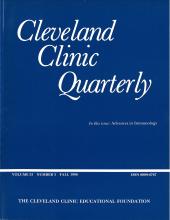ABSTRACT
In an attempt to predict acute renal allograft rejection, the authors prospectively studied peripheral blood T-cell subsets in 38 patients (an average of 4.2 determinations per patient) during the early posttransplantation period using the fluorescence activated cell sorter (FACS II) and monoclonal antibodies reactive with the total T-cell population (OKT 3), helper T cells (OKT 4), and suppressor T cells (OKT 8). All patients were treated with prednisone and azathioprine according to standard protocols, and all patients were initially treated with horse anti-human lymphocyte globulin (ALG) for an average period of 12.6 days. The rejection group consisted of 22 patients who rejected the allograft within one month of the last T-cell subset measurement. The rejection group, but not the nonrejection group, showed a significant increase (P <0.0005) between the average T-helper to T-suppressor ratio (T4/T8 ratio) during the ALG (T4/T8 = 1.36) and post-ALG (T4/T8 = 2.30) therapy periods. Predictive value analysis showed that no patient with a peak T4/T8 ratio of less than 1.3 after cessation of ALG had a clinical rejection episode. However, each patient whose peak T4/T8 ratio after cessation of ALG was greater than 2.3 times his own average T4/T8 ratio while receiving ALG therapy (incremental T4/T8 index) had a subsequent episode of rejection. In the rejection group there was a rising trend in the mean T4/T8 ratio as the day of rejection approached (1.92, 2.11, 2.15, 2.47, and 3.18 during days 15-21, 8-14, 5-7, 3-4, and 1-2 before rejection, respectively).
- Received December 1984.
- Accepted September 1985.
- Copyright © 1986 The Cleveland Clinic Foundation. All Rights Reserved.






